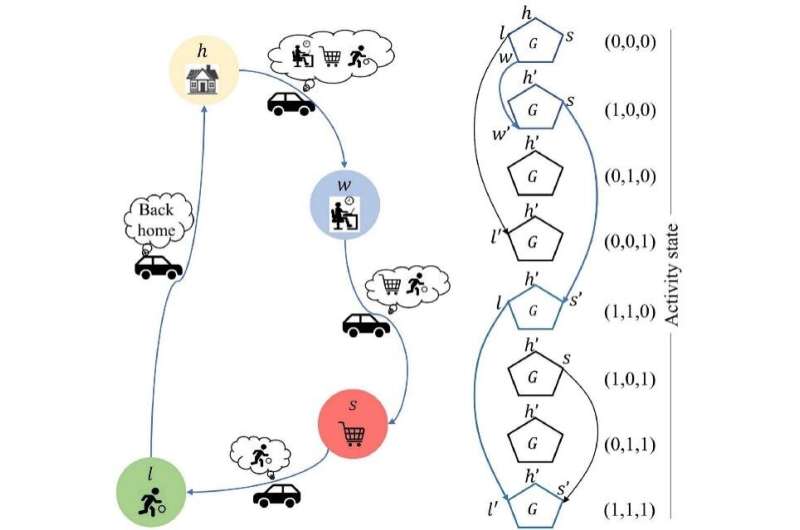This article has been reviewed according to Science X's editorial process and policies. Editors have highlighted the following attributes while ensuring the content's credibility:
fact-checked
proofread
An exploration of calibrating activity-based mobility demand of travelers with bounded rationality

Parameter calibration of traffic assignment models is vital to travel demand analysis and management. As an extension of the conventional traffic assignment, boundedly rational activity-travel assignment (BR-ATA) combines activity-based modeling and traffic assignment endogenously and can capture the interdependencies between high dimensional choice facets along the activity-travel patterns.
The inclusion of multiple episodes of activity participation and bounded rationality behavior enlarges the choice space and poses a challenge for calibrating the BR-ATA models. Until now, no formulation and solution approach for the parameter calibration of BR-ATA has been developed. To solve this problem, Dong Wang and Feixiong Liao formulated BR-ATA calibration as an optimization problem and used a simultaneous perturbation stochastic approximation method to solve it.
They published their study on January 20, 2023, in Communications in Transportation Research.
"In virtue of the multi-state supernetwork, we formulate the BR-ATA calibration as an optimization problem and analyze the influence of the two additional components on the calibration problem. Considering the temporal dimension, we also propose a dynamic formulation of the BR-ATA calibration problem. The simultaneous perturbation stochastic approximation algorithm is adopted to solve the proposed calibration problems. Numerical examples are presented to calibrate the activity-based travel demand for illustrations," says Dr. Feixiong Liao, a transportation scientist from the Urban Planning and Transportation Group at Eindhoven University of Technology (the Netherlands).
The BR parameter and activity participation affect the calibrations
The running times fall within [0.30, 0.40] hours when the BR parameter takes different values. Note that the ATA calibration problem needs more than 2 hours to reach the stopping condition. Regarding the influence of the number of activities, the running time decrease with the increase in the number of activities.
"We can conclude that the running times with the BR-related parameter falling within [0.05, 0.2] are relatively stable and shorter than that with a smaller parameter (i.e., 0.01 or ATA calibration problem). Besides, fewer activities always result in flows being concentrated in a specific period of time and link. The link congestion leads to more ATPs to equilibrate the OD demands," Dong Wang, an associate professor at Qingdao University (China), explains.
Temporal and spatial dimension extensions to the BR-ATA calibration problem
The SPSA takes 8.2 hours to reach the stopping condition for the BR-ATA calibration problem in the Sioux Falls network and the calibrated demands approximate a priori values. Taking one home location for example, the study observes that the calibrated demand has a relative error of 0.01.
For the BR-DATA calibration problem in the Sioux Falls network, the running time is 0.92 hours and the number of iterations is 647. All the calibrated demands approach a priori values. To further illustrate scalability in a larger network, the calibration of the BR-DATA model was carried out with the Eastern Massachusetts network. The SPSA takes more than 10 hours to complete 1000 iterations and the corresponding RMSN (a measurement of error) is as small as 0.06.
"The results demonstrate that the SPSA algorithm is feasible for the BR-ATA and BR-DATA calibration problems in sizable networks," Feixiong Liao says. "Nevertheless, a more effective algorithm is needed for large-scale real-world applications," he adds.
More information: Dong Wang et al, Formulation and solution for calibrating boundedly rational activity-travel assignment: An exploratory study, Communications in Transportation Research (2023). DOI: 10.1016/j.commtr.2023.100092





















